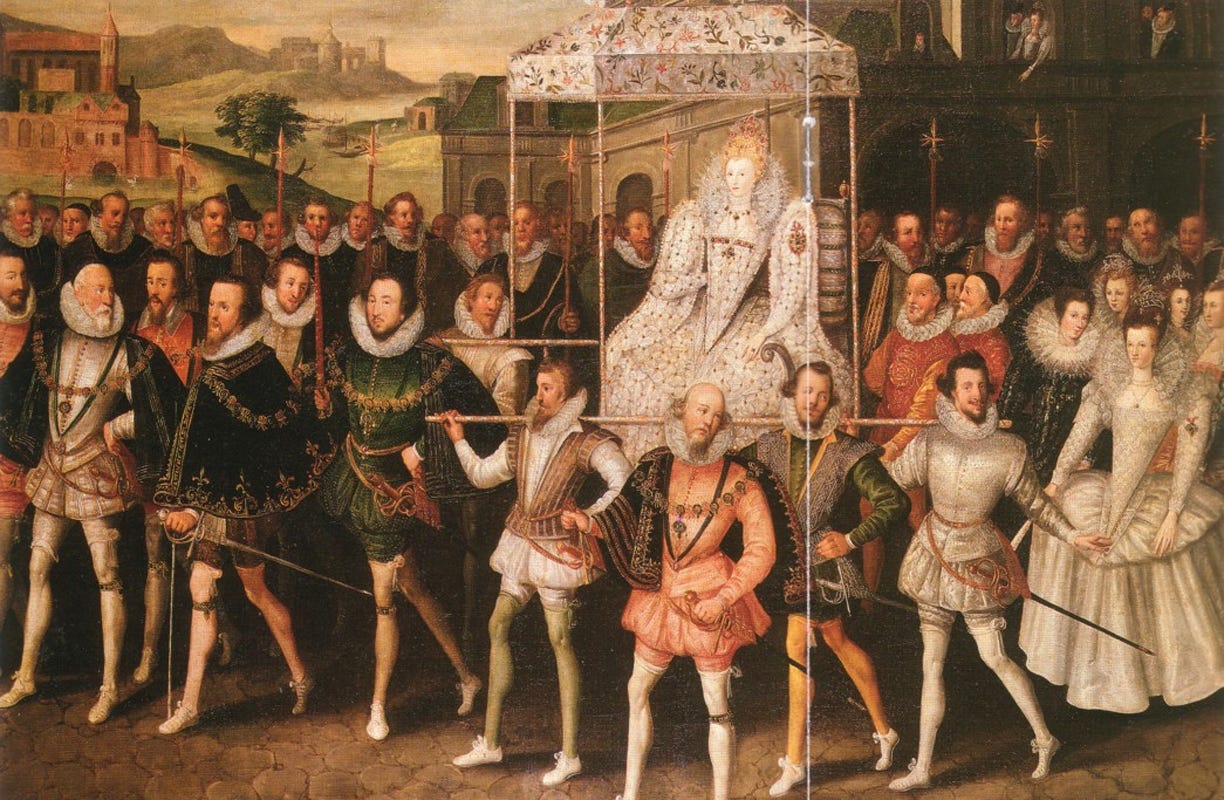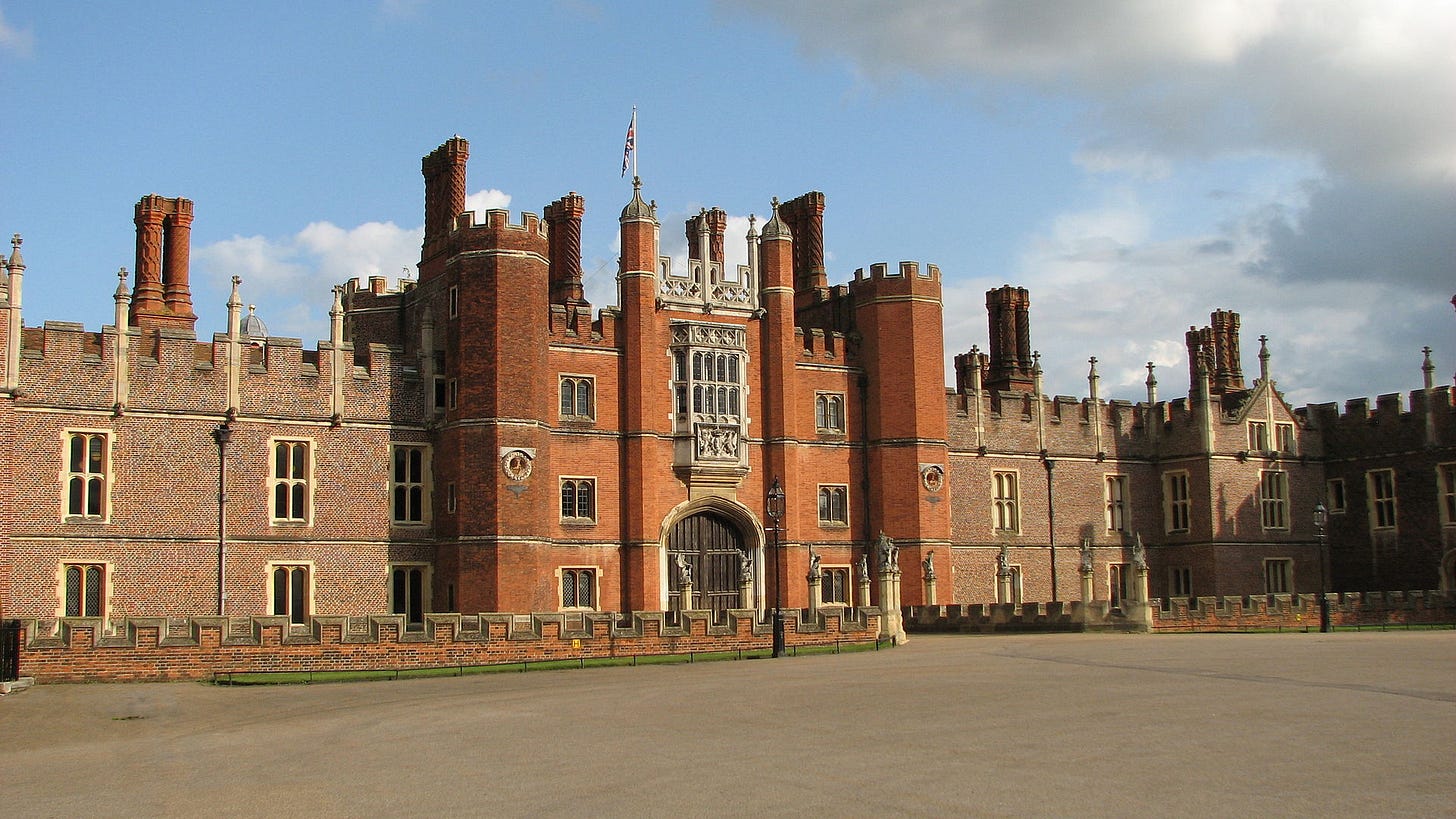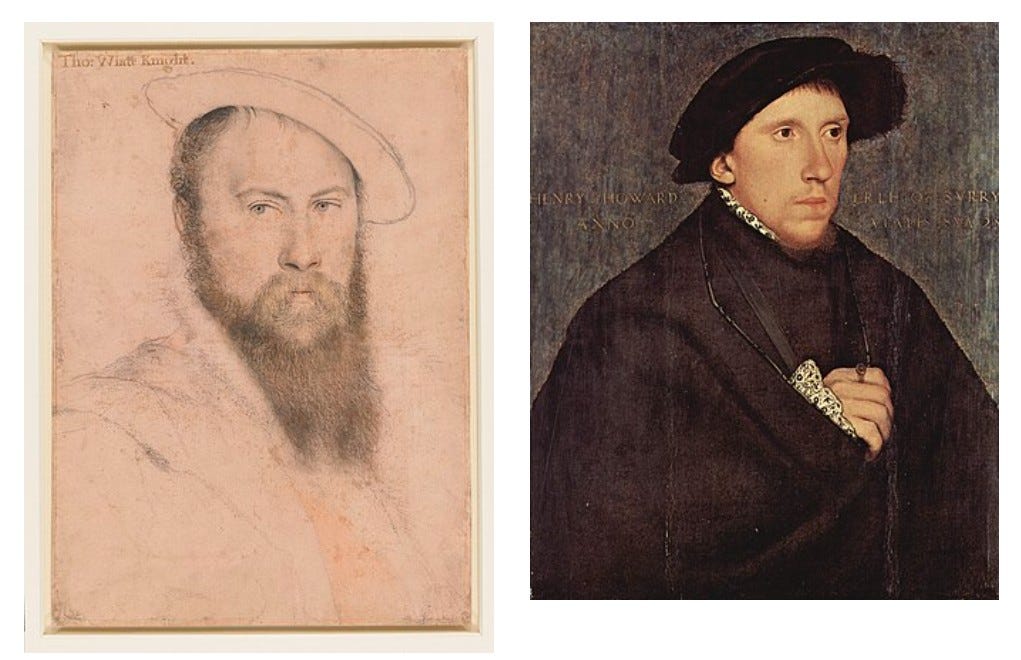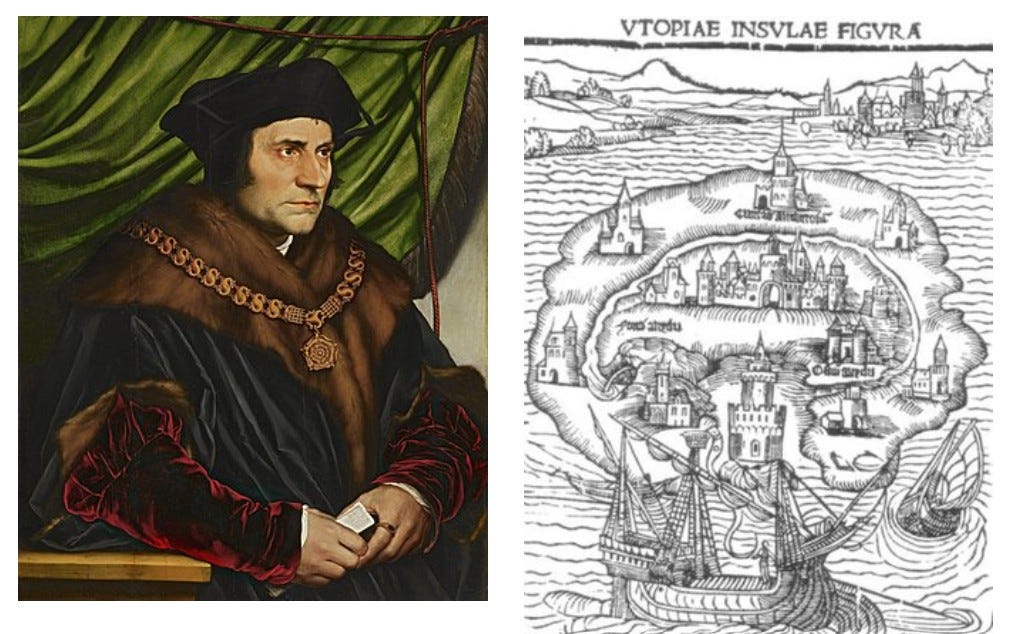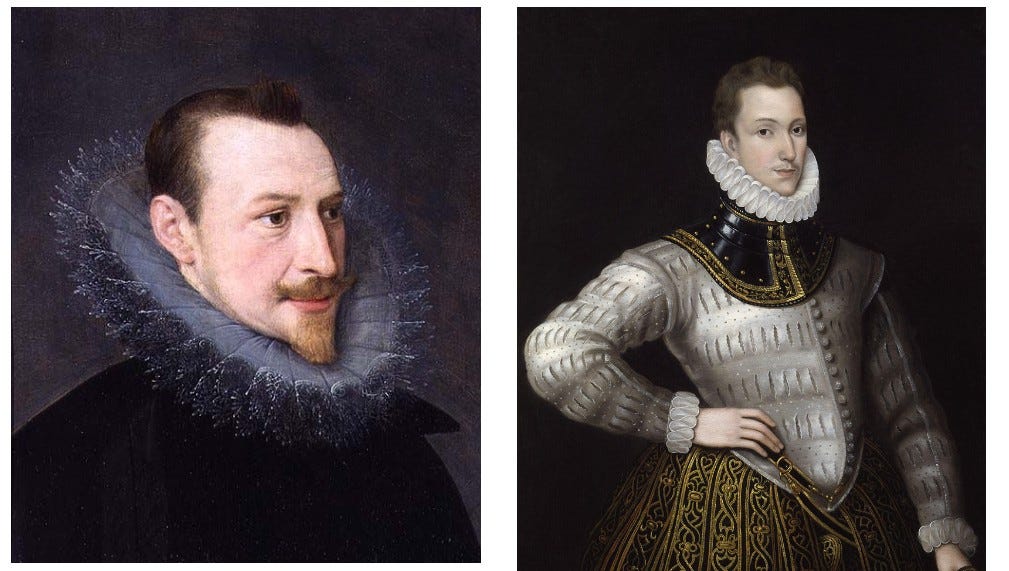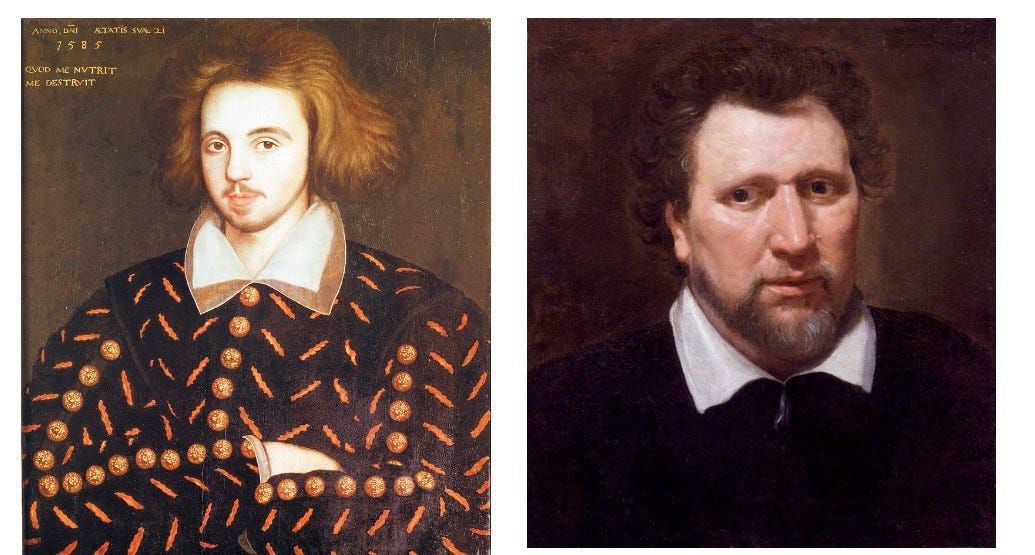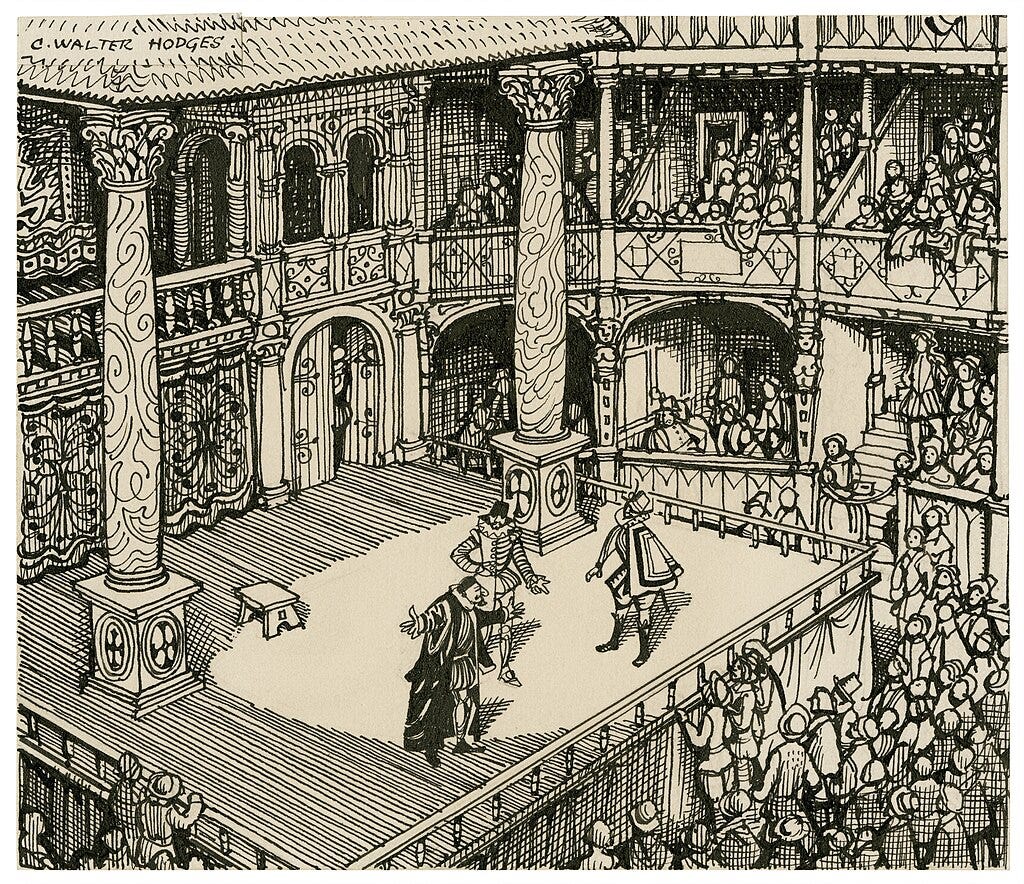Following the virtual civil war that marked England during the War of the Roses, England found itself again reunited under the Tudor dynasty just as a change in Western thinking was sweeping through Europe. The Renaissance takes place in the late 15th, 16th, and early 17th century in Britain, but somewhat earlier in Italy and southern Europe, somewhat later in northern Europe For English literature, Renaissance period has come to symbolize a golden period in with the works of Edmund Spenser, Christopher Marlowe and Philip Sidney. Of course, William Shakespeare is the most notable author to come out of this period, dominating the literary scene like Elizabeth I dominated the Tudor dynasty.
While poetics is still an important part of English literature at this point, we see a shift from mainly religious works into more secular works. We also see a shift in long, epic poems to plays as the main form of literary expression. Just like the burst of literary creation during the medieval era came to the end with the War of the Roses, the renaissance brought on by this period in English history would too be halted during the English Civil War until the restoration of the Monarchy heralded a new literary age.
What was the Renaissance?
The Renaissance refers to a primarily European cultural movement between the 1400s and 1700s that marked the transition from the medieval period into a more modern area. It involved social change, the revival of ideas and achievements of classical antiquity, and exploration of the arts, politics, architecture, literature, science, nature, and the planet. The term Renaissance comes from the Italian word rinascita meaning “rebirth.” The French version of the term renaissance was adopted to refer to the period in the 1830s.
Based in humanism, Greek philosophy, and the writings of figures like Dante, the Renaissance began in Florence in the late 1300s grew outward from there, arriving in some other areas of Europe as late as the 1700s. From Florence, it spread across Italy and then to the rest of Europe. The creation of moveable type by German printer Johannes Gutenberg around 1450 helped spread ideas faster and by the middle of the 1400s, it had arrived in England.
The English Renaissance is considered to be the period from the ascension of the first Tudor monarch Henry VII to the succession of Charles I. However, the Protestant Reformation in England stalled a lot of the Renaissance style and ideas spread in England as it was associated with Catholicism and so it wasn’t until the Elizabethan era that the true height of the English Renaissance happened, around the same time Italy was beginning to move into its Baroque period. This period still was a peak moment in British arts, literature, navigation, military might, and culture.
The difference between the English and Italian Renaissance is where their focus lay. Visual arts were much less significant in England than in Italy. The focus for Britain was more on literature, particularly drama and poetry, and music. A lot of the visual arts that occurred in Britain at this time were produced by foreigners, often those who were escaping prosecution for their Protestantism overseas.
The English Renaissance also marked a period when a lot of English medieval art was destroyed due to its religious connections, and Renaissance art in England was more likely to focus on landscapes and portraits rather than religious or mythological themes. England did produce unique architecture during this period with many buildings covering up their old medieval exteriors in the new fashion.
Early Tudor Period (1485-1558)
While the English Renaissance beginning is usually placed as the Battle of Bosworth Field in 1485, the literary renaissance in the country really began in the midst of the war when William Caxton introduced the first printing press to the country in 1476. Vernacular literature began to flourish and soon, both the Bible and eventually the Book of Common Prayer were in English for native speakers to read. The Renaissance rediscovery of the works of Roman dramatists like Seneca, Plautus, and Terence were also becoming influential as these works were translated into English.
Three English writers in particular were influential during the time of the early Tudor period. Thomas Wyatt - not to be confused with his rebellion-leading son of the same name - was the first Renaissance poet in England, experimenting with the language as well as writing sonnets echoing those of Petrarch. He experimented in a great deal of stanza form inherited from the Romans including rondeau, epigram, terza rima, ottava rima songs, satires and triplets. However, his rumored affair with Anne Boleyn sent Wyatt from being a royal favorite to a prisoner of the Tower, though his powerful friendships led to his release.
One of those friendships was with another early writer and Tudor figure, Henry Howard, the Earl of Surrey. Descended from kings himself, he was cousin to queen Anne Boleyn and Catherine Howard. While Wyatt was the first English poet to use the sonnet, Howard was the first to publish blank verse when he published translations of the Aeneid. He and Wyatt are known as the “father’s of the English sonnet” because of their collaboration on the first English translation of Petrarch. Howard gave these sonnets their rhyming meter and division into quatrains, which would be the form Shakespeare would use.
The third great English author of this period is Sir Thomas More, who served as Henry VIII’s lord chancellor and wrote Utopia in 1516. An early novel, the book depicted a political system of an imaginary ideal island nation. The controversial book gave rise to the later genres of utopian and dystopian fiction. More also authored a History of King Richard III, which was published after his death. A churchman at heart, More refused to recognize Henry VIII’s break with the Catholic Church and lost his head as a result.
Several authors contributed to another popular work that marked this period in English literature. The Book of Common Prayer was used by the new English Protestant or Anglican church rather than the Catholic liturgy. While work on this book began under Henry VIII, the first edition was not published until 1549 under the reign of his son Edward VI, a devoutly Protestant monarch. Another version was published in 1552, but when the king died the following year, Mary I reunited the country with Rome. What resulted was a flurry in religious texts to support both sides.

England’s conquering of Wales and Ireland brought them into the same literary tradition as much of England, with little effort or money put into supporting any type of independent literary tradition. The first book printed in Welsh was not made until 1546 and the first book printed in Ireland was the Protestant Book of Common Prayer, despite the majority Catholic populace. Scotland, however, was still an independent nation and ruled by James V between 1513 and 1542. His daughter Mary, Queen of Scots, would take the throne as an infant and see her age coincide with that of the more famous Elizabeth I in England.
James V supported a number of Scottish poets or makars, including William Stewart and John Bellenden who translated the Latin History of Scotland into the vernacular. Numerous figures at the royal court in Scotland would also be regarded as profound poets including diplomat David Lyndsay, royal secretary John Maitland, and David Hume of Godscroft, who was the son of a baron. Religious writers also enjoyed prominence including John Johnston, Andrew Melville, and George Buchanan.
Elizabethan Period (1558-1603)
While Shakespeare is generally considered the most prolific writer of the Elizabethan age, his work didn’t truly rise to prominence until about a third of the way through her reign. Even before Shakespeare’s works were being performed in London there were other writers who were influential during this period. Since Shakespeare was not only such an influence but also spread over into the Jacobean period, he is almost a literary era all his own.
One of the first writers of this era was Sir Edmund Spenser, who is known for his epic poem The Faerie Queene published in 1590. Sir Philip Sidney was one of the Queen’s most popular courtiers and wrote a wide variety of works include Astrophel and Stella, The Defence of Poetry and The Countess of Pembroke’s Arcadia. Thomas Campion wrote several pieces of literature to be set to song as part of the English Madrigal School as printed literature became more widely read and purchased. Isabella Whitney also emerged at this time, and is considered the first woman known to have published secular English language poetry.
Of course, the play was the thing for Elizabethan literature and though Shakespeare is the most famous person to have written in this period, he is not the only major Elizabethan playwright of note. Published in 1561, Thomas Sackville and Thomas Norton’s Gorboduc is considered one of the first Elizabethan plays and was one of the first verse dramas in English to use blank verse. It was also one of the first plays to depart from the earlier morality plays and Senecan tragedies. It would be followed by Thomas Kyd’s The Spanish Tragedy in 1592, which established the revenge play genre.
While Shakespeare is more remembered, Christopher Marlowe was seen by his contemporaries as the day’s greatest playwright until his tragic death. While Doctor Faustus is his most well-known work, he authored several other plays including Tamburlaine, The Jew of Malta, Edward the Second, and The Massacre of Paris. Marlowe also published several poems and translations of Ovid. Like Shakespeare, Ben Jonson also began publishing work under the reign of Elizabeth, but would outlast the queen and continue his success in the Jacobean Era. He was known for his comedy of humors, satirical plays and lyric poetry.
Believed to have been born to Dutch parents, Thomas Dekker began his involvement in plays and poetry also spanned from Elizabeth’s reign to that of James I. Jonson and Dekker collaborated on several works and were involved in the War of the Theatres between 1600 and 1601. Dekker wrote for the Worcester’s Men and the Admiral's Men and a pageant as part of James I’s coronation.
The Age of Shakespeare (1585-1616)
Born around 1564, William Shakespeare is often considered the greatest writer in the English language and is sometimes known as England’s national poet. He produced 38 plays, 154 sonnets, two long narrative poems and possibly several other works during his lifetime. He also invented more than 1,700 common words and more than 160 phrases, idioms and axioms still in common use today. His influence has spanned generations from his own contemporaries to the modern day.
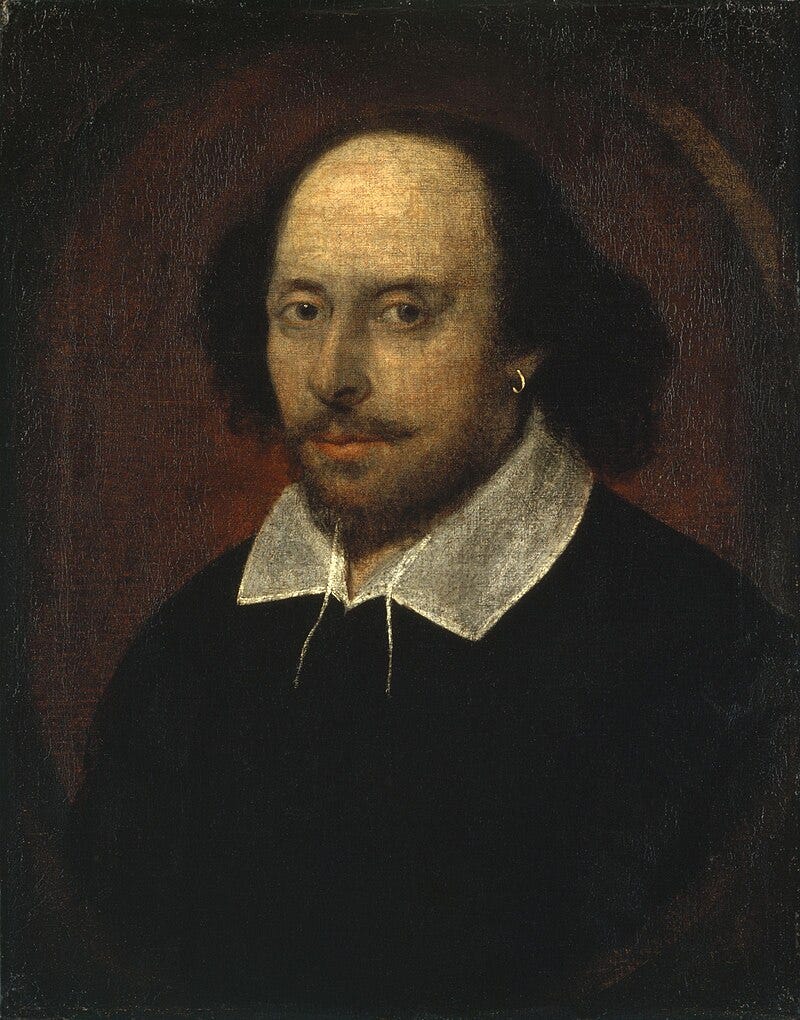
Shakespeare had possibly arrived in London by 1585 and worked as an actor and playwright. Several of his plays were on the stage by 1592, the same year he also began getting noticed as an actor. The earliest is suspected to be The Two Gentlemen of Verona, written around 1590. However, the theaters would be closed the same year Shakespeare got his first glimpse of success due to the plague. The following year - 1593 - Shakespeare began writing his famous sonnets and saw the publication of his first narrative poem, Venus and Adonis.
By 1594, Shakespeare was attached to the Lord Chamberlain’s Men along with famed actors of the day Richard Burbage and Will Kempe. The Lord Chamberlain’s men were patronized by Henry Carey who was who was Anne Boleyn’s nephew and Elizabeth I’s first cousin. Some also speculate he was also Elizabeth’s half-brother since his mother and the king were having an affair around the time he was born. After Carey’s death, his son would take over the troupe and under his patronage, the Globe Theater would open.
When Queen Elizabeth died in 1603, Shakespeare received continued patronage under the new king, James I. Luckily for Shakespeare, James I was also a lover of the arts and Shakespeare’s troupe became among his favorites after renaming themselves The King’s Men in his honor. Shakespeare would earn a commendation from the king in 1605 and some believe MacBeth was written to honor the new king’s Scottish ancestry. The last of his plays is generally believed to be The Two Noble Kinsmen, which was written sometime between 1613-4. He would die two years later.
However, it wouldn’t be until the death of his wife in 1623 that actors John Hemminges and Henry Condell would work together to publish a collection of 36 of Shakespeare’s 37 plays in what became known as the First Folio. Before this event, Shakespeare’s plays were only seen and performed, but after the publication, anyone who could afford a copy could read these works in their entirety. Soon, Shakespeare’s vocabulary, style of blank verse and poetry as well as many of the theatrical elements he employed were being copied by playwrights and writers in England and beyond.
Jacobean Period (1603-1625)
Like Shakespeare, other English dramatists continued to thrive when James I ascended the throne. In addition to Shakespeare, James I and his wife Anne of Denmark patronized various playwrights of the age including John Webster, Thomas Middleton, John Ford and Ben Jonson. After Shakespeare’s death, playwright John Fletcher took over the role of head playwright for the King’s Men. Fletcher often collaborated with fellow playwright Francis Beaumont.
Of course, Ben Jonson was probably the most notable poet of this age following Shakespeare. Before becoming a playwright himself, Johnson had performed in Kyd’s The Spanish Tragedy and began publishing his own work by 1598. He belonged to the Admiral’s Men, a rival theater troupe of Shakespeare’s, who performed at the Rose Theater. Under James I, he authored royal masques and some believe he was the true first poet laureate of the country.
Religious works were again coming to the forefront of English literature, most notably in the form of the King James Bible. First published in 1611, the Bible was actually the third version of biblical texts approved by the new Anglican church but was written under the authority of James I to respond to criticisms Puritans had with previous versions. Despite being the official Bible of the king, previous versions were still widely used until around 1661. While the book is in the public domain elsewhere, it can still only be published under Royal prerogative in England.
In addition to the new Bible, a new group known as the metaphysical poets were becoming popular in this period. These poems focused primarily on love and religion and included the likes of John Donne, George Herbert, Henry Vaughan, Andrew Marvell, and Emilia Lanier. Donne is probably the most famous of the group, a priest and lawyer who worked for the Church of England. He wrote everything from sonnets to sermons published during his lifetime and afterward.
Welsh-born George Herbert was also a churchman while his fellow Welshman Henry Vaughn was a doctor. Marvell sat in the House of Commons and later became friends with John Milton. Of course, Emilia Lanier was the highest ranked of these poets. Born Aemilia Bassano, she was allegedly the mistress of the same Henry Carey who patronized Shakespeare’s play troupe but was married to court musician Alfonso Lanier. Some even allege she was Shakespeare's "Dark Lady." Lanier wrote poetry on religious themes including one titled “Eve’s Apology.”
The precursors to the Cavalier poets were also emerging in this period from a group known as the Castalian Band. This group of royal court poets began their tenure under James I and continued it under the reign of his son Charles I until the interregnum. They included the king himself, Alexander Montgomerie, Patrick Hume of Polwarth, Alexander Hume, William Fowler, John Stewart of Baldyenneis, Thomas Hudson and Robert Hudson. Robert Aytoun and William Alexander, the Earl of Stirling, also participated in the group.





